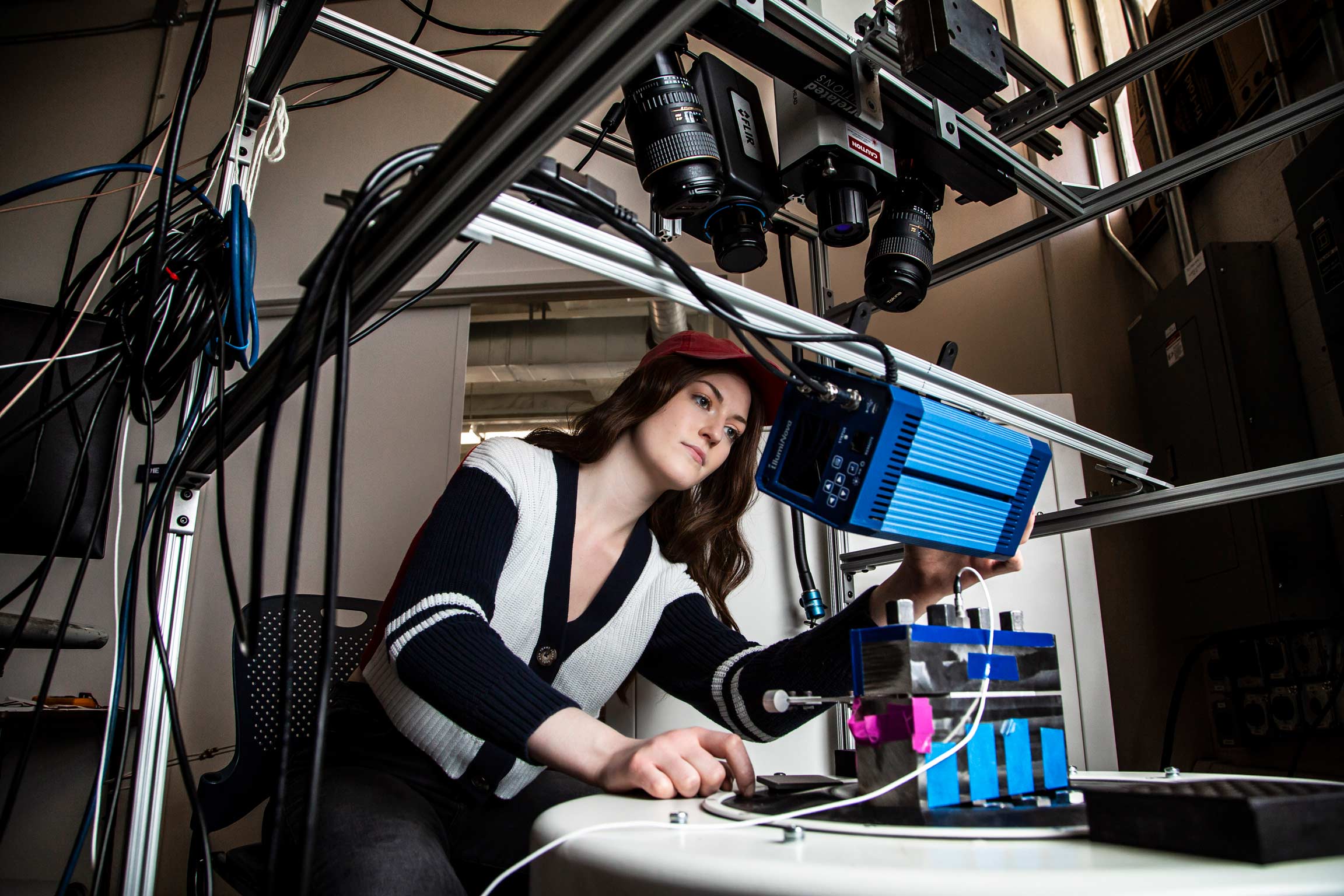162 and Counting: How the College of Engineering Supports Undergraduate Research
News Release — June 1, 2021 — Professors do it. Grad students never stop talking about it. But for many undergraduate students, research is still an enigma. What exactly do you research? How do you get involved? Is the scientific method a real thing?

Mechanical engineering undergrad Alexandra Loftin can add graduate-level research to her résumé. She studies how extreme temperature affects materials used in military aircraft engines. (Photo: Matt Jensen)
Utah State, however, has long been committed to demystifying research for its newest knowledge-seekers. As home to the second-oldest undergraduate research program in the country (right behind MIT), USU was recently recognized by the Council on Undergraduate Research for having the best campus-wide programs in the country. One of those programs is Engineering Undergraduate Research Program, known as EURP.
Founded by engineering professors Laurie McNeill and Barton Smith in 2009, EURP has a simple mission: to involve outstanding undergraduate students in research projects. Admitted students are matched with faculty mentors who they work with for three semesters to complete a research project. Students receive up to $4500 of paid research experience and are encouraged to present their work at a conference, at a research showcase, or in a peer-reviewed publication.
This isn’t research for research’s sake, says Ryan Berke, the program’s current director and professor of mechanical and aerospace engineering.
“One thing that makes research so special is that it's the act of creating new knowledge,” he said. “These student researchers are adding to the body of human understanding by solving problems that no one has ever solved before. They get to tackle hands-on projects where the answer isn't in the back of the book, and in doing so, they build excellent technical skills that make them more attractive to employers.”
Alexandra Loftin is completing her first semester in EURP. The mechanical and aerospace engineering junior studies how well metal alloys can withstand fatigue, which has applications for aircraft engines. Doing research has added another dimension to her degree.
“As a student, I sometimes feel constrained by only taking one or two classes on a subject that I really enjoy. The EURP program will allow me to dive deeper into my favorite subjects, which will give me a better understanding for my future career. And being able to apply my knowledge to a technical setting has made me even more excited for my career as an engineer.”
Loftin says that she didn’t really know what she wanted to do with engineering after college: EURP cleared a path for her. She plans to earn a master’s and PhD in aerospace engineering, with long-term goals of working at either NASA or SpaceX. And Loftin isn’t the only one whose caught the grad-school bug – Berke says at least two-thirds of EURP participants pursue advanced degrees.
This year, EURP welcomes its largest cohort yet and celebrated its 150th participant among a grand total of 162 student researchers. The future is bright.
###
EURP is the College of Engineering’s flagship undergraduate research program, but there are many opportunities for engineering undergrads to get involved with research. Outside of formal university- and college-level research programs, many professors also accept undergraduate research assistants as early as freshman year. Learn how to apply to research programs or how to find a research mentor on our Undergraduate Research Opportunities page.
Contact: Dr. Ryan Berke, ryan.berke@usu.edu, 435-797-8184
Writer: Anessa Pennington, anessa.pennington@usu.edu, 435-797-7512

